
Hakata: The Heartbeat of Fukuoka
Discover Hakata, Fukuoka's vibrant district where ancient traditions meet modern life, offering a rich tapestry of cultural festivals, delicious cuisine, and unparalleled shopping.
Hakata, a vibrant district in Fukuoka, Japan, is a delightful blend of traditional culture and modern dynamism. Known for its rich history dating back to ancient times, Hakata is the birthplace of Hakata-ori textiles and the renowned Hakata dolls. Walking through its streets, you will encounter an array of temples and shrines, such as the Kushida Shrine, which holds the grand Hakata Gion Yamakasa festival every July. This UNESCO-recognized festival involves spectacular floats and is a magnificent display of local spirit and tradition. The district also offers a culinary adventure with its famous street food stalls known as yatai. Here, you can savor local delicacies like Hakata ramen, a rich pork-bone broth noodle soup that is a must-try for any visitor. In addition to yatai, Hakata's indoor markets, like the bustling Yanagibashi Rengo Market, offer a taste of Fukuoka's fresh seafood and local produce. For those interested in shopping, Hakata boasts the Canal City Hakata, an impressive shopping and entertainment complex. This 'city within a city' features a mix of retail stores, restaurants, a theater, and even a canal running through it. Hakata Station is another focal point, serving as a major transportation hub and a shopping paradise with its array of boutiques and dining options. Whether you are here for the history, the food, or the shopping, Hakata has something to offer everyone. Its blend of old and new, coupled with its warm and welcoming atmosphere, makes it an unforgettable destination.
Local tips in Hakata
- Visit the Kushida Shrine early in the morning to avoid crowds and enjoy the tranquil atmosphere.
- Try Hakata ramen at one of the local yatai food stalls for an authentic dining experience.
- Wear comfortable shoes as exploring Hakata involves a fair amount of walking.
- Check the schedule for Canal City Hakata's fountain shows – they are a visual treat!
- If visiting in July, don't miss the Hakata Gion Yamakasa festival for an unforgettable cultural experience.
Hakata: The Heartbeat of Fukuoka
Hakata, a vibrant district in Fukuoka, Japan, is a delightful blend of traditional culture and modern dynamism. Known for its rich history dating back to ancient times, Hakata is the birthplace of Hakata-ori textiles and the renowned Hakata dolls. Walking through its streets, you will encounter an array of temples and shrines, such as the Kushida Shrine, which holds the grand Hakata Gion Yamakasa festival every July. This UNESCO-recognized festival involves spectacular floats and is a magnificent display of local spirit and tradition. The district also offers a culinary adventure with its famous street food stalls known as yatai. Here, you can savor local delicacies like Hakata ramen, a rich pork-bone broth noodle soup that is a must-try for any visitor. In addition to yatai, Hakata's indoor markets, like the bustling Yanagibashi Rengo Market, offer a taste of Fukuoka's fresh seafood and local produce. For those interested in shopping, Hakata boasts the Canal City Hakata, an impressive shopping and entertainment complex. This 'city within a city' features a mix of retail stores, restaurants, a theater, and even a canal running through it. Hakata Station is another focal point, serving as a major transportation hub and a shopping paradise with its array of boutiques and dining options. Whether you are here for the history, the food, or the shopping, Hakata has something to offer everyone. Its blend of old and new, coupled with its warm and welcoming atmosphere, makes it an unforgettable destination.
Iconic landmarks you can’t miss
JR Hakata Station Square
Discover the bustling JR Hakata Station Square, a vibrant business park and tourist attraction in Fukuoka, where culture, dining, and shopping converge.

Hakata Port Tower
Experience breathtaking views and rich maritime history at Hakata Port Tower, a stunning observation deck in the heart of Fukuoka.
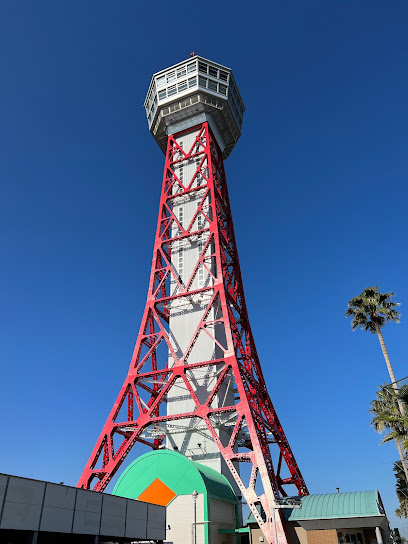
Rakusuien
Experience the tranquil beauty of Rakusuien, a stunning garden in Fukuoka that offers a serene escape and a taste of Japanese culture.

Hakatamachiya Furusatokan
Explore the cultural heritage of Fukuoka at Hakatamachiya Furusatokan, a local history museum filled with fascinating exhibits and engaging stories.

Hakata Sennen-no-Mon Gate
Discover the historic charm of Hakata Sennen-no-Mon Gate, an iconic tourist attraction in Fukuoka, Japan, steeped in rich cultural heritage.

Ninjin Park
Discover the tranquil beauty of Ninjin Park, a lush urban retreat in Fukuoka, perfect for relaxation, recreation, and seasonal splendor.

Lantern Marker, trademark for the Fukuoka & Hakata families.
Explore the Lantern Marker in Hakata, Fukuoka - a historical landmark rich in culture and tradition, perfect for your travel adventures.

Statue of Otojiro Kawakami
Explore the Statue of Otojiro Kawakami in Fukuoka, a tribute to Japanese theater's heritage and a cultural landmark worth visiting.

九州鉄道発祥の地の碑
Discover the historical significance of 九州鉄道発祥の地, a captivating landmark in Fukuoka showcasing Japan's railway heritage.

博多塀
Discover the rich cultural heritage and scenic beauty of Hakata Port, a historical landmark in Fukuoka, Japan.

Unmissable attractions to see
Sumiyoshi Jinja
Discover the serene beauty of Sumiyoshi Jinja, a historic Shinto shrine in Fukuoka, Japan, blending spirituality with stunning architecture.

Hakata Port Tower
Discover unmatched views of Fukuoka from Hakata Port Tower, an iconic observation deck showcasing the city’s vibrant skyline and picturesque harbor.

Meiji Park
Experience the serene beauty of Meiji Park in Fukuoka, a tranquil oasis perfect for relaxation, family outings, and cultural exploration.

Hakata Sennen-no-Mon Gate
Discover the historic Hakata Sennen-no-Mon Gate in Fukuoka, where tradition meets beauty amidst lush gardens and vibrant local culture.
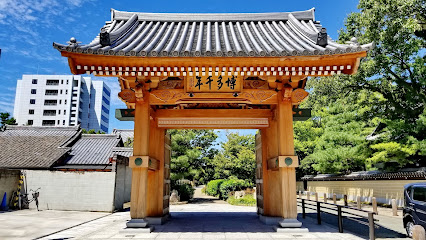
Ninjin Park
Discover tranquility and cultural charm at Ninjin Park in Fukuoka, a serene urban oasis perfect for relaxation and family outings.

博多塀
Discover the serene beauty and cultural significance of Sumiyoshi Shrine, a historic landmark in the heart of Fukuoka, Japan.

Essential places to dine
Orenofurenchi Hakata
Discover Orenofurenchi Hakata: A fusion of French culinary art and local flavors awaits you in Fukuoka's vibrant dining scene.

Hakata Mizutaki Toriden
Experience authentic Japanese dining at Hakata Mizutaki Toriden in Fukuoka—home to delicious mizutaki hot pot and exquisite chicken dishes.

Osakaya
Experience authentic Japanese cuisine at Osakaya in Fukuoka - where tradition meets flavor in every dish.
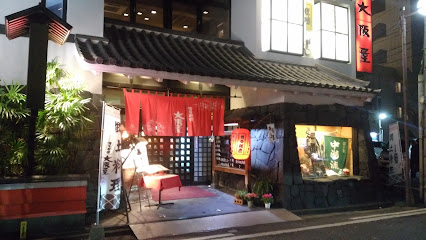
L'ECAILLER Oyster Bar (JR Hakata City Store)
Savor fresh oysters and exquisite seafood dishes at L'ECAILLER Oyster Bar in Fukuoka's JR Hakata City.

Hakata-Maruhide Honten
Discover the vibrant flavors of Japan at Hakata-Maruhide Honten – Fukuoka's premier izakaya for authentic dining experiences.

博多メシ 男厨
Experience authentic Japanese dining at Hakata Meshi Otoko – where local flavors meet a vibrant izakaya atmosphere.

THE LIVELY KITCHEN FUKUOKA HAKATA
Experience the fusion of Italian and Japanese cuisines at THE LIVELY KITCHEN FUKUOKA HAKATA, where every meal is a celebration of flavor.

Kagaya Hakataten
Discover exquisite Kyoto-style cuisine at Kagaya Hakataten, Fukuoka's premier fine dining destination renowned for its fresh seafood and elegant ambiance.
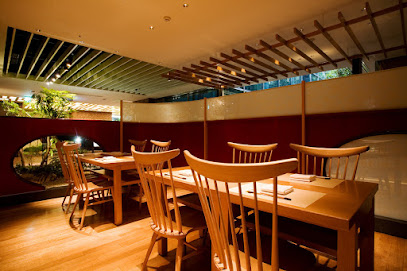
Restaurant Hiramatsu Hakata
Experience the pinnacle of French fine dining at Restaurant Hiramatsu Hakata, where exquisite cuisine meets elegant ambiance in Fukuoka.

MAIN DINING cotton.|WITH THE STYLE FUKUOKA
Discover authentic Italian flavors at MAIN DINING cotton., where exquisite dishes meet an elegant atmosphere in the heart of Fukuoka.
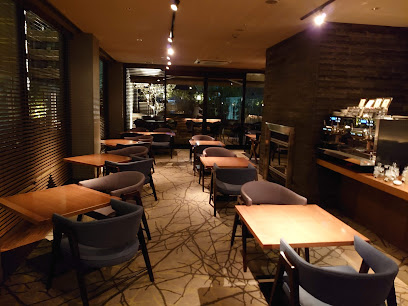
Markets, malls and hidden boutiques
CANAL CITY HAKATA
Discover the ultimate shopping and entertainment destination at Canal City Hakata, Fukuoka's vibrant and picturesque hub of fun and culture.

AMU Plaza Hakata City
Discover AMU Plaza Hakata City, a vibrant shopping mall in Fukuoka offering a mix of international brands, local delights, and family-friendly entertainment.

Hakata Hankyu
Explore Hakata Hankyu, Fukuoka's premier department store offering a unique blend of local culture, exquisite shopping, and gourmet delights.

Hakata Marui
Immerse yourself in the vibrant shopping and dining experience at Hakata Marui in Fukuoka, where fashion meets flavor in a lively atmosphere.

Kawabata Shopping Arcade
Experience the vibrant Kawabata Shopping Arcade in Fukuoka, where shopping, culture, and culinary delights converge in one destination.

HANDS Hakata Store
Explore the unique offerings of HANDS Hakata Store - a premier gift shop in Fukuoka featuring cosmetics, home goods, and more.

The Hakata Gift Shop (Canal City Hakata Store)
Explore The Hakata Gift Shop at Canal City Hakata for unique souvenirs, local snacks, and a taste of Fukuoka's rich culture.

Hakata銘品蔵 デイトス店
Discover authentic Japanese souvenirs at Hakata Meihin Kura, the perfect gift shop in Fukuoka's JR Hakata Station.

BUSCHIKA
Explore BUSCHIKA in Fukuoka - a premier shopping mall offering diverse brands, delightful dining, and a unique local experience in a vibrant atmosphere.

Nippon CHACHACHA Hakatasutoa
Explore Fukuoka's vibrant culture at Nippon CHACHACHA Hakatasutoa, your go-to destination for unique Japanese souvenirs and local treasures.

Essential bars & hidden hideouts
Hakata Mitsubachi
Experience the vibrant flavors of Fukuoka at Hakata Mitsubachi, where traditional Japanese cuisine meets a lively bar atmosphere.

Yebisu Bar(yebisu beer bar)
Discover Yebisu Bar in Fukuoka, a haven for beer lovers with a delightful menu of grilled meats and seafood in a vibrant izakaya setting.

The Ship
Discover The Ship, an Irish pub in Fukuoka, blending Irish charm and Japanese flavors for an unforgettable dining experience.

Pub Half Penny, Tsukushikuchi
Discover the heart of Ireland in the vibrant city of Fukuoka at Pub Half Penny, where great food, drinks, and live music await.

The Hakata Harp
Discover The Hakata Harp in Fukuoka, where Irish hospitality meets local flavors in a cozy pub atmosphere.

Bar Cooper
Discover the vibrant atmosphere of Bar Cooper, a premier Irish pub in Fukuoka, offering a delightful selection of drinks and local culture.

Tony's Bar
Experience Fukuoka's vibrant nightlife at Tony's Bar, a cozy spot for unique drinks and local vibes in the heart of the city.

Komasa
Discover Komasa, Fukuoka's premier cocktail bar, blending traditional techniques with modern creativity in a vibrant and inviting atmosphere.
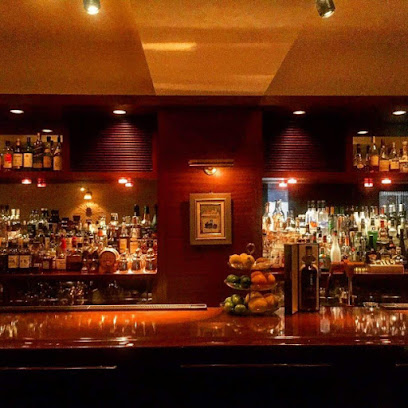
Sebek
Experience the vibrant nightlife of Fukuoka at Sebek, where creative cocktails and a welcoming atmosphere await in Nakasu.

Hideout Bar
Experience the vibrant nightlife at Hideout Bar in Fukuoka - a perfect blend of sophistication and fun with exquisite cocktails.

Local Phrases
-
- Helloこんにちは
[Konnichiwa] - Goodbyeさようなら
[Sayōnara] - Yesはい
[Hai] - Noいいえ
[Īe] - Please/You're welcomeどうぞ
[Dōzo] - Thank youありがとうございます
[Arigatō gozaimasu] - Excuse me/Sorryすみません
[Sumimasen] - How are you?お元気ですか?
[Ogenki desu ka?] - Fine. And you?元気です。あなたは?
[Genki desu. Anata wa?] - Do you speak English?英語を話せますか?
[Eigo o hanasemasu ka?] - I don't understandわかりません
[Wakarimasen]
- Helloこんにちは
-
- I'd like to see the menu, pleaseメニューを見せていただけますか?
[Menyū o misete itadakemasu ka?] - I don't eat meat肉を食べません
[Niku o tabemasen] - Cheers!乾杯!
[Kanpai!] - I would like to pay, pleaseお会計をお願いします
[Okaikei o onegaishimasu]
- I'd like to see the menu, pleaseメニューを見せていただけますか?
-
- Help!助けて!
[Tasukete!] - Go away!行ってください!
[Itte kudasai!] - Call the Police!警察を呼んで!
[Keisatsu o yonde!] - Call a doctor!医者を呼んで!
[Isha o yonde!] - I'm lost道に迷っています
[Michi ni mayotte imasu] - I'm ill具合が悪いです
[Guai ga warui desu]
- Help!助けて!
-
- I'd like to buy...買いたいです...
[Kaitai desu...] - I'm just looking見ているだけです
[Mite iru dake desu] - How much is it?いくらですか?
[Ikura desu ka?] - That's too expensive高すぎます
[Takasugimasu] - Can you lower the price?値下げていただけますか?
[Nesagete itadakemasu ka?]
- I'd like to buy...買いたいです...
-
- What time is it?今何時ですか?
[Ima nanji desu ka?] - It's one o'clock一時です
[Ichiji desu] - Half past (10)10時半です
[Jūji han desu] - Morning朝
[Asa] - Afternoon午後
[Gogo] - Evening夕方
[Yuugata] - Yesterday昨日
[Kinō] - Today今日
[Kyō] - Tomorrow明日
[Ashita] - 1一
[Ichi] - 2二
[Ni] - 3三
[San] - 4四
[Yon] - 5五
[Go] - 6六
[Roku] - 7七
[Shichi] - 8八
[Hachi] - 9九
[Kyū] - 10十
[Jū]
- What time is it?今何時ですか?
-
- Where's a/the...?...はどこですか?
[...Wa doko desu ka?] - What's the address?住所は何ですか?
[Jūsho wa nan desu ka?] - Can you show me (on the map)?(地図で)見せていただけますか?
[(Chizu de) misete itadakemasu ka?] - When's the next (bus)?次の(バス)はいつですか?
[Tsugi no (basu) wa itsu desu ka?] - A ticket (to ....)チケット(まで)
[Chiketto (made)]
- Where's a/the...?...はどこですか?
History of Hakata
-
Hakata's history dates back over 1,400 years, with its establishment as a port city during the Asuka period (538-710 AD). The name 'Hakata' is believed to derive from 'Hakata-no-Tsu' (Hakata Port), reflecting its role as a vital trade hub. Its strategic location on the northern shore of Kyushu made it a gateway for cultural exchange between Japan and the Asian mainland, particularly China and Korea.
-
During the Kamakura period (1185-1333), Hakata flourished as a center for commerce and trade, attracting merchants and craftsmen. The emergence of the merchant class led to the establishment of the Hakata Gion Yamakasa festival, which began in the 13th century as a ritual to appease the gods during epidemics. This annual event has evolved into a vibrant celebration showcasing elaborate floats and traditional performances.
-
Hakata faced significant challenges during the Muromachi period (1336-1573) due to conflicts and invasions, including the Mongol invasions in the late 13th century. However, by the Edo period (1603-1868), Hakata regained its status as a bustling port and became part of Fukuoka domain under the rule of the Kuroda clan. This period saw the development of traditional crafts, particularly Hakata textiles and ceramics, which remain integral to the region's cultural identity.
-
The Meiji Restoration (1868) marked a significant transformation for Hakata, as Japan opened its doors to modernization and Western influence. The construction of railways and modernization of the port facilitated trade and transportation, leading to economic growth. Hakata became an important industrial center, with the establishment of factories and businesses that contributed to Fukuoka's development as a key urban area in Japan.
-
Hakata's rich cultural heritage is evidenced by its historic temples, shrines, and festivals. Notable sites include the Kushida Shrine, which is central to the Gion Yamakasa festival, and the Hakata Machiya Folk Museum, showcasing traditional crafts and lifestyles. In recent years, efforts have been made to preserve and promote Hakata's unique cultural traditions amidst urbanization, ensuring that its historical significance continues to resonate with both locals and visitors.
Hakata Essentials
-
Hakata is conveniently located in Fukuoka and can be easily accessed via various modes of transportation. From Fukuoka Airport, take the Kuko Line train directly to Hakata Station, which takes about 5 minutes. If you're traveling from Tenjin, the central shopping and entertainment district, take the subway on the Nishitetsu Line to Hakata Station, approximately a 5-minute ride. Buses and taxis are also available for direct transport to Hakata.
-
Hakata is well-served by public transport. The subway system is efficient, with the Hakata Station being a major hub for the Kuko Line and the Hakozaki Line. Buses are also a viable option, with numerous routes connecting different parts of Hakata. For a more local experience, consider renting a bicycle, as many areas are bike-friendly. Walking is also a great way to explore the neighborhood's attractions, such as temples and shopping streets.
-
Hakata is generally a safe neighborhood for tourists. However, standard precautions should be taken. Avoid walking alone late at night in less crowded areas, particularly around the railway station. Petty crimes like pickpocketing can occur in crowded areas, so keep your belongings secure. Areas with higher crime rates include secluded alleys, particularly those leading to entertainment districts; exercise caution in these regions.
-
In case of an emergency, dial 110 for police assistance or 119 for fire and medical emergencies in Japan. It is advisable to have a translation app ready, as not all emergency personnel may speak English. Familiarize yourself with the location of the nearest hospital or clinic, which can be found on the Fukuoka city website or local guidebooks. Pharmacies are widely available for minor health issues.
-
Fashion: Do wear comfortable shoes for walking, and dress modestly when visiting shrines and temples. Avoid overly casual attire when dining in nicer restaurants. Religion: Do respect local customs, such as bowing before entering temples. Do not take photos in restricted areas. Public Transport: Do be quiet and refrain from talking on phones. Don't eat or drink on trains or buses. Greetings: Do greet locals with a slight bow; handshakes are also accepted. Don't overextend greetings; a polite nod is often sufficient. Eating & Drinking: Do try local specialties like Hakata ramen and enjoy meals at izakayas. Don't tip, as it is not customary in Japan.
-
To experience Hakata like a local, visit the morning market at Yanagibashi Rengo Market for fresh seafood and produce. Try to join in on local festivals, such as the Hakata Gion Yamakasa in July, which showcases traditional floats. Engage in conversation with shopkeepers and enjoy the local street food scene, particularly at yatai (street stalls) in the evenings for an authentic taste of Hakata's food culture.
Nearby Cities to Hakata
-
Things To Do in Hiroshima
-
Things To Do in Busan
-
Things To Do in Ulsan
-
Things To Do in Gyeongju
-
Things To Do in Pohang
-
Things To Do in Daegu
-
Things To Do in Suncheon
-
Things To Do in Jeju City
-
Things To Do in Andong
-
Things To Do in Gwangju
-
Things To Do in Jeonju
-
Things To Do in Mokpo
-
Things To Do in Daejeon
-
Things To Do in Osaka
-
Things To Do in Nara













